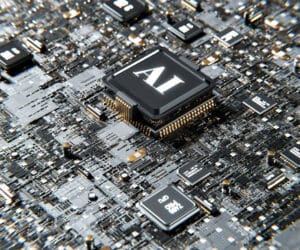A practical guide for developers: Explore the latest ASR and TTS technologies to build efficient voice applications.
1. Introduction: A New Era in Voice Recognition Technology
With the rapid development of artificial intelligence, ASR and TTS technologies are widely used across many fields. From smart assistants to automatic subtitle generation, audiobooks to virtual hosts, voice technology is changing how humans interact with machines.
In 2025, voice technology sees new breakthroughs, especially with advancements in large language models (LLMs) and diffusion models, significantly expanding the performance and application scenarios of ASR and TTS.
2. ASR: From Accuracy to Diversity
2.1 What is Automatic Speech Recognition(ASR)?
Automatic Speech Recognition (ASR) converts spoken language into text and is widely used in voice assistants, meeting transcriptions, and subtitle generation.
2.2 Latest Developments
- FireRedASR: An open-source ASR model by the Xiaohongshu team, achieving new SOTA results on Mandarin test sets with an 8.4% reduction in character error rate (CER). It includes FireRedASR-LLM and FireRedASR-AED structures for high accuracy and efficient inference needs.
- Samba-ASR: An ASR model based on the Mamba architecture, effectively modeling temporal dependencies using structured state space models (SSM), achieving SOTA performance on multiple standard datasets.
- Whisper: A multilingual ASR model released by OpenAI, trained on 680,000 hours of multilingual data, supporting multi-task and multilingual speech recognition.
3. TTS: From Text to Natural Speech
3.1 What is TTS?
Text-to-Speech (TTS) technology converts written text into natural, fluent speech and is widely used in audiobooks, voice assistants, and podcast production.
3.2 Latest Developments
- Kokoro TTS: An open-source model based on StyleTTS, offering various voice packs and multilingual support under the Apache 2.0 license, suitable for commercial deployment.
- NaturalSpeech 3: A TTS system by Microsoft using a factorized diffusion model, achieving zero-shot speech synthesis with human-level voice quality.
- T5-TTS: A TTS model by NVIDIA based on large language models, addressing hallucination issues in speech synthesis, improving accuracy and naturalness.
4. ASR Application Practices and Model Selection Advice
4.1 Application Scenario Breakdown
| Application Field | Description | Recommended Model/Technology |
|---|---|---|
| ???? Smart Customer Service | Real-time transcription of user input and generation of structured data for RPA or Q&A systems | Whisper, FireRedASR |
| ???????? Online Education | Transcription of classroom recordings/live sessions, keyword extraction, and note generation | Whisper + GPT-4 + Listening Enhancement Preprocessing |
| ???? Meeting Systems | Recognition of multiple speakers, role differentiation, synchronized subtitles | Multi-channel ASR + Speaker Diarization |
| ???? Industrial Inspection | Speech command recognition and work log transcription in noisy environments | Samba-ASR + Beamforming |
| ???? Voice Input Method | Local deployment, real-time response | Whisper-Tiny + LoRA Fine-tuning |
4.2 Model Selection Advice (Comparison Table)
| Model Name | Advantages | Disadvantages | Suitable Scenarios |
|---|---|---|---|
| Whisper (OpenAI) | Strong multilingual support, mature community | Large model size | General speech recognition |
| FireRedASR | SOTA in Chinese recognition, easy local deployment | Not multilingual | Chinese business systems |
| Samba-ASR | Strong temporal modeling, high robustness | High inference threshold | Noisy environments |
| OpenASR Benchmark Models | Continuously updated, mainly open-source | Difficult to commercialize | Academic testing or baseline comparison |
5. TTS Typical Practices and Productization Advice
### 5.1 Application Scenarios and Integration Methods
| Application Scenario | Output Form | Suggested Technology Combination |
|---|---|---|
| ???? Audiobooks/Podcasts | High-fidelity audio, personalized tone | NaturalSpeech3 + HiFi-GAN |
| ???? Virtual Assistants | Real-time voice + command feedback | T5-TTS + ASR Feedback Optimization |
| ???? Smart Broadcasting | Multilingual + scene tone switching | Kokoro TTS + Prompt Emphasis Control |
| ???? Games/Virtual Characters | Emotion-driven voice + role tone | VITS + StyleTTS |
| ???? E-commerce Live Synthesis | Host tone simulation, phrase recommendation | FastSpeech2 + Keyword Template Generation |
5.2 Development Advice (From "Audible" to "Usable")
- Emphasize Prompt Controllability: Use LLMs to generate prompts with emotional descriptions for more human-like synthesis.
- Post-processing Enhancement: Apply vocoders like HiFi-GAN and MB-MelGAN to improve synthesized audio quality.
- Support for Multiple Speakers and Languages: Especially important for virtual digital human systems, supporting "code-switching" is crucial.
- Edge Deployment Tips:
- Use ONNX to export TTS models
- Deploy VITS/Glow-TTS Tiny models on embedded devices (e.g., Raspberry Pi)
- Text Preprocessing Suggestions:
- Normalize numbers, abbreviations, foreign languages in advance
- Pay special attention to mapping strategies for "paragraph pauses, punctuation intonation"
6. Collaborative Innovation in TTS and ASR (Closed-Loop)
A complete voice system often needs both understanding (ASR) and human-like speech (TTS). More systems are building such a closed loop:
graph LR UserSpeech["User Speech Input"] --> ASR["Speech Recognition (ASR)"] ASR --> NLU[Intention Recognition/Structured Parsing] NLU --> LLM["Large Language Model (Prompt Generation)"] LLM --> TTS["Text-to-Speech (TTS)"] TTS --> AudioOut["Generated Audio"]
???? This closed loop is widely used in:
• AI customer service / Copilot
• Smart in-car voice systems
• Accessibility screen readers
• Intelligent meeting summary systems
7. Deployment Strategy Analysis for Voice Systems
When designing voice application systems, developers must consider not only model accuracy and speed but also the limitations and advantages of the "deployment environment." Here are three typical deployment architectures:
7.1 Cloud Deployment: High Performance, Flexible Resources
Suitable Scenarios:
• Massive request access (e.g., AI customer service centers)
• Multilingual recognition and high-concurrency TTS generation
• Rapid iteration (frequent model updates)
Advantages:
• Can deploy large models (Whisper large, NaturalSpeech3)
• Dynamic scaling (e.g., using Hugging Face Spaces / AWS Lambda + GPU instances)
• Easy model A/B testing
Challenges:
• Network latency (affects real-time experience)
• Privacy compliance risks (voice uploads to the cloud)
• High cost for frequent calls (charged per token or second)
Recommended Practices:
• Use offline synthesis + CDN caching for TTS
• Combine ASR with WebSocket for streaming inference
• Use NVIDIA NeMo or OpenVINO for multi-model concurrent deployment
7.2 Edge Deployment: Good Real-Time Performance, Controlled Costs
Suitable Scenarios:
• In-car voice, smart home, handheld devices (POS machines, etc.)
• Sensitive to network requirements (cannot rely on the cloud)
Advantages:
• Fast response time (local execution, no network dependency)
• Strong privacy protection (local data not uploaded)
• Can be paired with GPU/TPU acceleration (Jetson, NPU)
Challenges:
• Complex model compression (requires pruning, quantization)
• Power and storage limitations (deployed models must be <300MB)
• Generally do not support complex multilingual models
Recommended Toolchain:
• Use ONNX Runtime
• Choose edge models Whisper-Tiny, VITS-Tiny, DeepSpeech-lite
• Use TensorRT + INT8/FP16 compilation for inference acceleration
7.3 Ultra-Lightweight Embedded Deployment: Small Devices That Can Recognize and Speak
Suitable Scenarios:
• Smart doorbells, toy voice modules, microphone chip modules
• Single-chip voice interaction devices (ESP32, AP6256)
Advantages:
• Ultra-low power operation
• Extremely small models (<30MB)
• Integrated local speech recognition + synthesis
Challenges:
• Can only recognize command words/short phrases, limited TTS effect
• Does not support streaming conversations or large language models
Recommended Solutions:
• ASR: Picovoice Rhino, Google WakeWord Engine
• TTS: EdgeImpulse + Coqui TTS model trimming
• Combine with RTOS or embedded Linux to drive sound card modules
flowchart TD subgraph Cloud A1(Whisper Large) A2(NaturalSpeech3) end subgraph Edge B1(Whisper Tiny) B2(VITS Tiny) end subgraph Embedded C1(Rhino) C2(Coqui TTS) end
8. Conclusion: Building Intelligent Voice Systems that "Understand and Speak Freely"
• Cloud deployment is suitable for "big and strong": pursuing high quality, scalability, and multilingual processing
• Edge deployment leans towards "real-time reliability": suitable for response-sensitive scenarios and privacy-sensitive businesses
• Embedded deployment emphasizes "extreme compression": suitable for small, low-power devices for voice interaction
Multi-Tier Deployment Architecture for ASR and TTS
flowchart TD subgraph s1["Cloud Deployment"] A1_cloud["Whisper Large / FireRedASR"] A2_cloud["NaturalSpeech3 / T5-TTS"] A1["???? ASR Recognition Module"] A2["????️ TTS Speech Synthesis Module"] end subgraph s2["Edge Devices"] A1_edge["Whisper Tiny / Samba-ASR"] A2_edge["VITS Tiny / FastSpeech2"] end subgraph s3["Embedded Chips"] A1_chip["Rhino / Google ASR Lite"] A2_chip["Coqui-TTS / MBMelGAN Lite"] end U1["???? User Speech Input"] --> A1 A1 --> LLM["???? Intent Parsing & LLM Response"] LLM --> A2 A2 --> U2["???? Output Playback"] A1 -.-> A1_cloud & A1_edge & A1_chip A2 -.-> A2_cloud & A2_edge & A2_chip
• Dashed lines indicate interchangeable deployment options (i.e., the node can run in the cloud, edge, or chip).
• All paths return to the voice interaction loop (input → recognition → parsing → synthesis → output).
???? Recommended Strategy:
In complex projects, place ASR at the edge and TTS in the cloud (cache for playback after generation) to form a hybrid architecture for optimal performance and experience.
If you're looking to implement or enhance your ASR and TTS solutions, our team offers expert services to guide you through every step of the deployment process. Contact us today to discover how we can help bring your voice technology projects to life.



